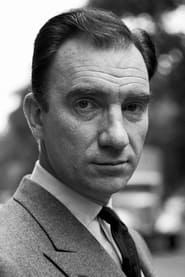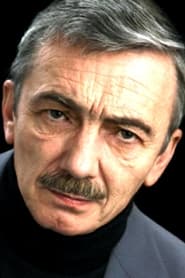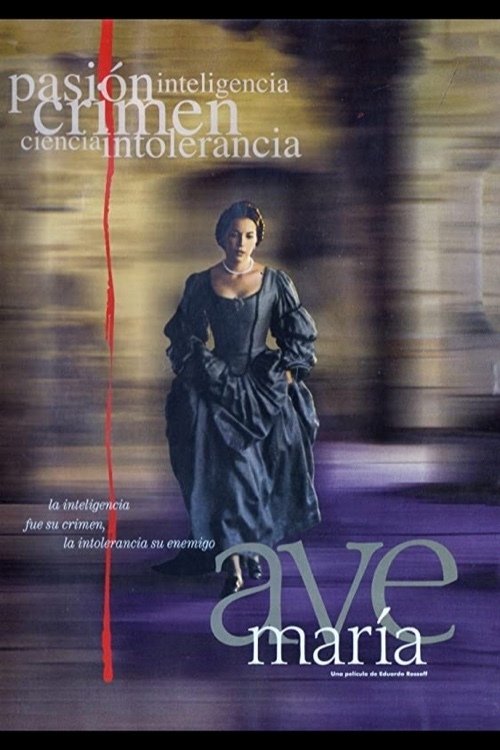
Ask Your Own Question
What is the plot?
In the gentle dawn of 1936, in a small Galician town nestled among the lush greenery of northern Spain, young Moncho stands at the threshold of a new school year, his fragile body still recovering from a recent illness. The air is thick with the promise of spring, but also with an undercurrent of unease--the country teeters on the edge of civil war. Moncho, a shy and anxious seven-year-old, harbors a deep fear of school, convinced that teachers wield their authority through harsh discipline. His heart pounds as he steps into the classroom, the walls echoing with the chatter of children, yet he feels isolated, an outcast among his peers.
Enter Don Gregorio, the new schoolteacher, a man whose presence immediately dispels Moncho's fears. Unlike the stern figures Moncho imagined, Don Gregorio is warm and compassionate, his eyes twinkling with kindness and a gentle humor. He teaches not with a rod but with words and wonder, guiding his students through the beauty of poetry, the mysteries of nature, and the virtues of kindness. On Moncho's first day, when the boy's fear overwhelms him and he flees into the nearby woods, Don Gregorio follows without anger, finding him among the trees and patiently coaxing him back. "Do you know why the butterfly's tongue is so special?" Don Gregorio asks softly, introducing Moncho to the word espiritrompa--the delicate proboscis with which butterflies sip nectar, a symbol of curiosity and the fragile beauty of life.
Moncho's world begins to expand under Don Gregorio's tutelage. The classroom becomes a sanctuary where Republican ideals of freedom and learning flourish, a stark contrast to the growing shadows of fascism creeping across Spain. Moncho's father, a staunch Republican and atheist, shares Don Gregorio's beliefs and supports his son's education. His mother, however, harbors more cautious, Nationalist sympathies, her worry etched in quiet glances and hushed conversations. The family's political divide is a microcosm of the nation's turmoil, a tension simmering beneath the surface of daily life.
Outside school, Moncho's life is filled with the innocent joys of childhood. He befriends Roque, a lively boy from his class, and admires his older brother, a budding saxophone player who embarks on a band trip, offering glimpses of a world beyond their small town. The woods, where Moncho once fled in fear, become a place of discovery and wonder as Don Gregorio takes him on excursions to observe butterflies and other creatures, teaching him to see the world through eyes of awe and respect.
Yet, the idyllic rhythm of Moncho's days is shattered as political tensions escalate. The Nationalists gain power, and the freedoms once taken for granted begin to erode. Don Gregorio, once a beloved teacher and symbol of hope, becomes a marked man. His Republican beliefs and outspoken nature draw the ire of the new regime. The town's atmosphere grows heavy with fear and suspicion, neighbors turning against neighbors, families torn apart by ideology.
The film's pivotal confrontation arrives with chilling clarity. One day, Nationalist forces descend upon the town, their presence a grim reminder of the brutal reality now unfolding. Don Gregorio is arrested, accused of subversion and enemy sympathies. The scene is harrowing: the teacher, dignified yet resigned, is forced to walk through the town alongside other Republican prisoners. The townspeople gather, some in silence, others shouting in condemnation. Moncho's family stands at a crossroads; his mother, desperate to shield them from harm, urges them to publicly denounce Don Gregorio and the Republicans. "You must shout with them," she insists, her voice trembling with fear. "It's the only way to survive."
Moncho's father, a man of conviction, breaks down in tears, torn between his beliefs and the instinct to protect his family. Under immense pressure, he raises his voice alongside his wife's, a painful betrayal of his ideals. Moncho, caught in the maelstrom of fear and loyalty, follows suit. As the truck carrying Don Gregorio and the other prisoners rumbles away, Moncho hurls stones at it, his small hands trembling. Yet, in a final, poignant act of silent defiance, he shouts a single word: espiritrompa. The word, taught to him by Don Gregorio, carries a secret message of love and remembrance, a fragile thread connecting him to the man who opened his eyes to the world's beauty.
The film closes on this heartrending note, the innocence of childhood irrevocably lost amid the harsh realities of war and repression. Don Gregorio's fate, though not shown explicitly, is grimly implied--taken away to imprisonment or execution, a casualty of the brutal political purge. Moncho's family survives, but at the cost of their integrity and the betrayal of a beloved mentor. The final image lingers: a boy standing alone, the echo of espiritrompa a whisper of hope and sorrow intertwined, a testament to the human cost of conflict and the enduring power of memory.
What is the ending?
In the ending of the movie "Butterfly," the protagonist, a young boy named Manuel, confronts the harsh realities of life and loss. After a series of emotional events, he ultimately finds a way to cope with his grief and the changes in his life.
As the film draws to a close, Manuel is seen grappling with the absence of his mother, who has been a central figure in his life. The emotional weight of her loss is palpable, and he struggles to understand the world around him without her guidance. In a poignant moment, he visits a butterfly sanctuary, where he reflects on the beauty and fragility of life. The film ends with a sense of hope as Manuel begins to embrace his new reality, symbolized by the butterflies that flutter around him.
Now, let's delve into the ending in a more detailed, chronological narrative.
As the final act unfolds, we find Manuel standing alone in his room, surrounded by remnants of his childhood. The walls are adorned with drawings of butterflies, a symbol of his innocence and the fleeting nature of happiness. His mother's absence looms large, and the silence in the house is deafening. Manuel's internal struggle is evident; he feels lost and abandoned, grappling with the overwhelming emotions of grief and confusion.
In a pivotal scene, Manuel decides to visit the butterfly sanctuary that he and his mother used to frequent. The sanctuary is a vibrant, colorful place filled with fluttering butterflies, each one representing a fragment of his memories with her. As he steps inside, the warm sunlight filters through the glass, illuminating the delicate creatures that dance around him. Manuel watches in awe as the butterflies flit from flower to flower, their beauty contrasting sharply with his sorrow.
As he wanders through the sanctuary, Manuel's mind drifts back to moments shared with his mother--her laughter, her comforting words, and the way she encouraged him to embrace life. The sanctuary becomes a sanctuary for his heart, a place where he can confront his feelings. He kneels down, observing a particularly vibrant butterfly that lands nearby. In that moment, he feels a connection to his mother, as if she is guiding him to find peace.
The emotional climax occurs when Manuel, filled with a mix of sadness and acceptance, releases a butterfly from his hand. As it takes flight, he watches it soar into the open sky, symbolizing his desire to let go of his pain and embrace the memories of his mother. Tears stream down his face, but there is a sense of relief in his expression. He understands that while his mother is gone, her spirit lives on in the beauty of the world around him.
The film concludes with a final shot of Manuel standing at the entrance of the sanctuary, a small smile breaking through his tears. He looks up at the sky, where butterflies continue to dance in the sunlight. This moment signifies his acceptance of loss and the beginning of his journey toward healing. The fate of Manuel is one of resilience; he learns to carry his mother's memory with him, finding strength in the love they shared.
In the end, "Butterfly" leaves viewers with a poignant message about the cycle of life, the importance of cherishing memories, and the beauty that can emerge from grief. Manuel's journey reflects the universal experience of loss, and his transformation signifies hope for the future.
Is there a post-credit scene?
The movie "Butterfly," produced in 1999, does not have a post-credit scene. The film concludes its narrative without any additional scenes or content after the credits roll. The story wraps up with a focus on the emotional journey of the characters, leaving the audience with a sense of closure regarding the themes explored throughout the film.
What role does the character of the mother play in the protagonist's life?
The mother serves as a pivotal figure in the protagonist's life, representing both comfort and conflict. Her presence is often felt through memories and flashbacks, highlighting her influence on the protagonist's emotional state. The mother's struggles with her own identity and societal expectations impact the protagonist's journey towards self-discovery.
How does the setting influence the characters' actions and decisions?
The setting, a small, rural town, plays a crucial role in shaping the characters' lives and decisions. The isolation and limitations of the environment create a sense of entrapment for the protagonist, fueling her desire to break free. The town's conservative values and close-knit community also heighten the stakes of the characters' choices, as they navigate societal pressures.
What are the key moments that lead to the protagonist's self-discovery?
Key moments leading to the protagonist's self-discovery include her interactions with nature, particularly the butterflies, which inspire her to reflect on her own life. Additionally, pivotal conversations with her father and encounters with other characters challenge her perceptions and push her towards embracing her true self, culminating in a powerful realization of her own strength and desires.
What is the significance of the butterfly motif in the film?
The butterfly motif in the film symbolizes transformation and the fragility of life. It represents the characters' struggles and their desires for freedom and change, particularly for the protagonist, who seeks to escape her oppressive circumstances.
How does the relationship between the main character and her father evolve throughout the film?
The relationship between the main character, a young girl, and her father is complex and strained. Initially, there is a sense of distance and misunderstanding, as the father is portrayed as strict and emotionally unavailable. As the story progresses, moments of vulnerability and connection emerge, revealing the father's own struggles and regrets, ultimately leading to a deeper understanding between them.
Is this family friendly?
The movie "Butterfly," produced in 1999, contains several elements that may not be suitable for children or sensitive viewers. Here are some potentially objectionable or upsetting aspects:
-
Themes of Abandonment: The film explores deep emotional themes, including feelings of abandonment and loss, which may be distressing for younger audiences.
-
Family Conflict: There are scenes depicting intense family conflict and emotional turmoil, which could be unsettling for children.
-
Depictions of Violence: While not graphic, there are moments that suggest violence or aggression, which may be alarming.
-
Emotional Struggles: Characters experience significant emotional struggles, including depression and existential crises, which might be heavy for sensitive viewers.
-
Complex Relationships: The film delves into complicated relationships that may be difficult for younger audiences to understand, including themes of betrayal and loyalty.
These elements contribute to a narrative that is more suited for mature audiences, as they require a level of emotional understanding and maturity to fully grasp the underlying messages.
































